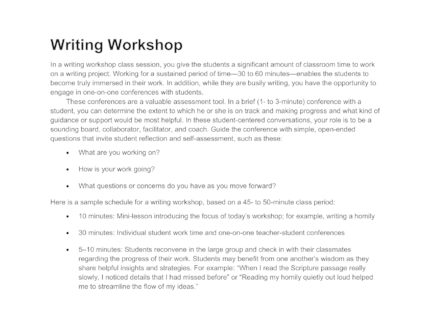Discussion-Oriented
24 results
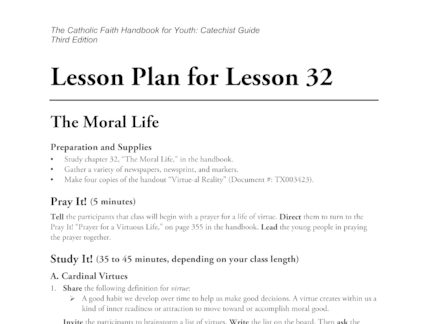
Document
Lesson Plan for Lesson 32
A lesson plan for lesson 32 in The Catholic Faith Handbook for Youth: Catechist Guide. In this lesson students explore what it means to use virtues and grace to live a moral life.
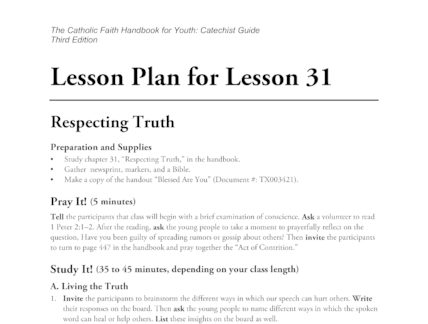
Document
Lesson Plan for Lesson 31
A lesson plan for lesson 31 in The Catholic Faith Handbook for Youth: Catechist Guide. In this lesson students explore what it means to respect truth.
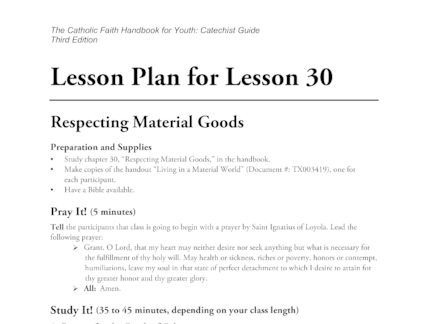
Document
Lesson Plan for Lesson 30
A lesson plan for lesson 30 in The Catholic Faith Handbook for Youth: Catechist Guide. In this lesson students explore what it means to respect material goods.
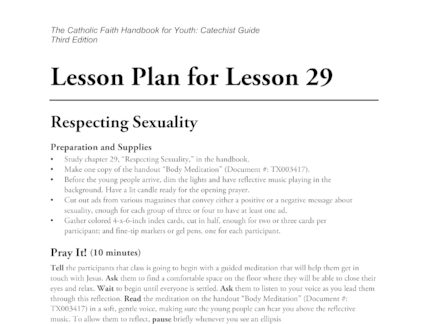
Document
Lesson Plan for Lesson 29
A lesson plan for lesson 29 in The Catholic Faith Handbook for Youth: Catechist Guide. In this lesson students explore what it means to respect the sexuality of ourselves and others.
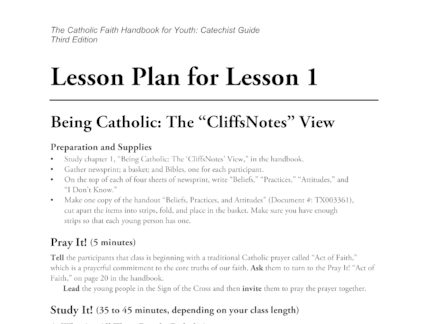
Document
Lesson Plan for Lesson 1
A lesson plan for lesson 1 in The Catholic faith Handbook for Youth: Catechist Guide. This lesson plan challenges students to identify why they are Catholic and the core beliefs, practices, and attitudes of Catholicism

Document
Chalk Talk
Steps on how to facilitate a silent conversation in writing in response to a topic or question posed.
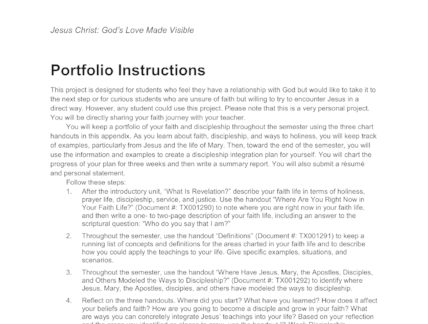
Document
Portfolio Instruction
This resource is part of the Living in Christ Series. It offers instruction to students who must put together a portfolio of their readings, writings and assignments from lessons on Jesus and Christology.

Document
A Gallery Walk - Discussion Technique
This article is from the Living in Christ Series. It is an instructional article for teachers to learn how to administer a "Gallery Walk" discussion technique.
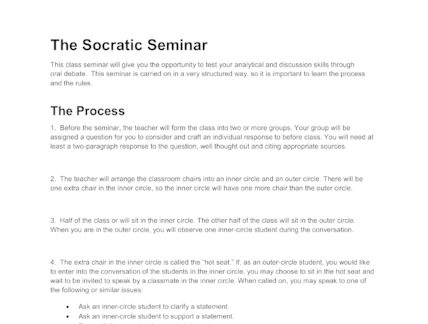
Document
The Socratic Seminar
This article is part of the Living in Christ Series. Teachers may use it as a guide to using the Socratic Method in classroom discussion.
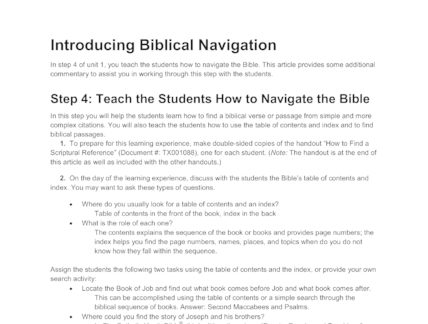
Document
Introducing Biblical Navigation
This article is from the Living in Christ Series. It offers guidelines for teachers teaching students how to navigate the Bible, including reference to other worksheet for the students.
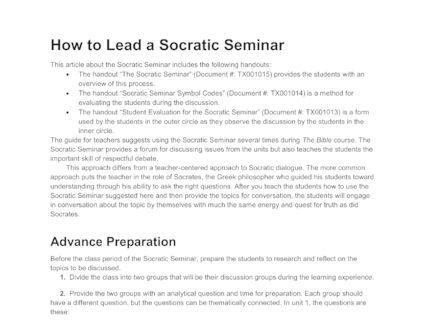
Document
How to Lead a Socratic Seminar
This article is part of the Living in Christ Series. It includes information on how to prepare for, lead, assess and follow-up the classroom use of a Socratic Seminar discussion method.
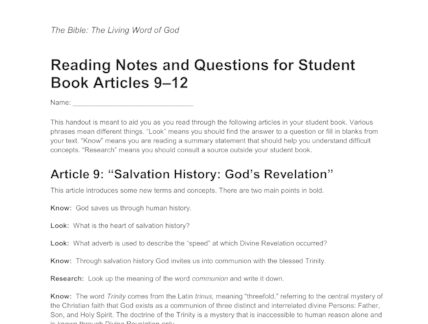
Document
Reading Notes and Questions for Student Book Articles 9-12
This reading guide is part of the Living in Christ Series. Students can use it while reading other articles from the LIC Series to take important notes and answer significant questions.
Article
The Sacraments at the Service of Communion: Holy Orders and Matrimony
This session from Catechetical Sessions on Liturgy and the Sacraments invites participants to consider the unique ways in which ordained ministers and married people serve the people of God, responsibilities that are presented in the vows they take in either …
Article
Paul's Conversion
Background for the Teacher This session focuses our attention on Paul's conversion experience. Using a hard-boiled egg and a raw egg as focusing symbols, the young people reflect on the meaning of conversion. Then two or three of the participants …
Article
Program aims to get youth excited about Bible
Young people in the diocese are getting excited about Scripture and it's all part of a national effort called "Yes! Youth Engaging Scripture." YES is a Catholic teen-to-teen Bible sharing concept and to date, some 1,800 young people have been …
Article
Frequently Asked Questions About the Pope
What is the pope? The pope is the bishop of the Church of Rome, Italy. Because of the importance of Rome, Tradition recognizes the pope as the supreme pastor of all Christians. Why is the Church of Rome so important? …
Article
Wrestling with Diversity
How do we welcome non-Christians into our schools and our religion classrooms, and at the same time give witness to our own Christ-centered faith? How do we invite students to learn from and respect other faith traditions without sending the …
Article
Six Ways to be Truly Catholic
I always thought that I would have made a great archbishop in Salzburg during the time of Mozart. But instead I'm the archbishop of Milwaukee in the time of rock 'n' roll. That's the way life turns out. We live …
Article
Using Literature in Theology Classes
Editor's note: The author of our feature article, Kathleen Hodapp, was one of the participants in last summer's workshop "The Catholic High School As Faith Community," held here in Winona, Minnesota, as well as on the East Coast and the …
Article
Service and Justice
We are standing on the brink, and our bishops are urging us to jump. Many of us don't know where we'll end up, and we aren't sure whether we'll land in one piece. Yet the sense of urgency is building, …
Article
The Power of Parables
We all know that a good story will almost always act as an excellent springboard for reflection. Jesus' most effective teaching tool was the parable. He would gather his disciples and tell them a story with a message that moved …
Article
Once Upon A Time: Using Student-Generated Stories in Religion Classes
Religion classes should be interesting, if not compelling, and they can be if what is interesting is determined by the students. This, of course, is not a new approach. Learner-centered educational theories have been popular for decades. Using story as …
Article
Expect Much, Praise Much, Be Present to Them
Course materials, such as the high school religion textbooks and teacher's manuals published by Saint Mary's Press, are a significant ingredient in the education of our young people. But we all know that the most important factor in a student's …

